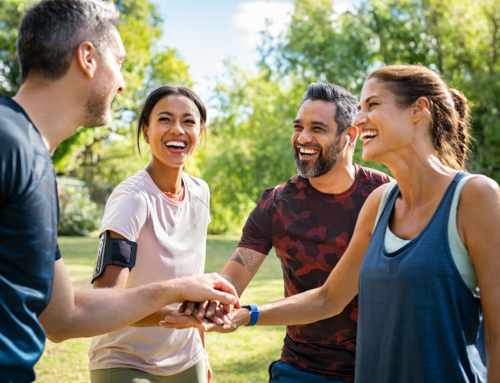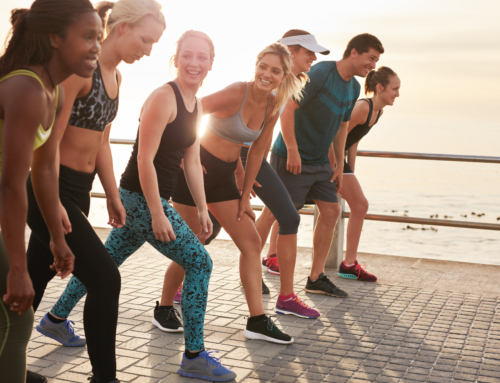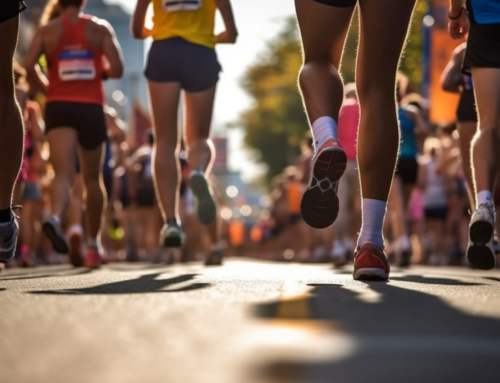Best Dryland Exercises for Swimmers
Dryland exercises are important for swimmers to integrate into their regular training and sessions. By working hard on land, swimmers can benefit and improve their abilities in the pool.
Whether your access to the pool has been inhibited by covid-19 or you want to bolster your strength poolside for better performance, here is the ultimate guide to dryland exercise for swimmers.
What is Dryland Training?
Dryland training is exercising that swimmers can do on land that maintains and develops muscle strength and general fitness as well as flexibility and mobility. It is also known as strength and conditioning, due to the muscle-focussed exercises. Using bodyweight and small weights, swimmers can strengthen their muscles and condition their body for improved swimming.
Dryland training is not a replacement for swimming, but an addition to training plans to mimic movements of swimming and muscle activation for better in-pool performance.
Benefits of Dryland Training
- Routine – Those who exercise regularly and consistently will see the most benefit and continue to be motivated in and out of the pool.
- Stroke Improvements – By developing stronger muscles through dryland training, swimmers will get more out of each stroke in the water. For example, stroke rate can increase as more powerful strokes mean more done in less time. Also, each stroke can go farther with less effort when powered by stronger muscles.
- Maintain Fitness – If a swimmer does have to take time away from the pool, continuing to train on dryland can ensure fitness and strength is maintained so progress is not lost.
- Prevent Injury – Conditioning helps improve mobility and reduce the risk of injury when swimming.
Best Dryland Exercises for Swimmers
The best exercises may differ according to the stroke style of a swimmer, however for freestyle swimming, here are some of the most effective:
Stretches
Get the most out of a workout or swim by stretching beforehand and warming up your muscles. Perform a mix of dynamic and static stretches to activate multiple areas of your body.
Good stretches for swimmers include: arm circles, beginning small and progressively getting larger; swinging arms to open the chest; leg swings to activate the hamstrings; and planks or T rotations to wake up the core.
Pull-Ups
Pulls-ups are great for strengthening the upper body such as traps and shoulders, critical for efficient strokes. To begin with it may be hard to do pull-ups unassisted, but resistance bands can be used or assistance given by someone else.
- Grab the pull-up bar securely with hands about should width or more apart.
- Brace your core and realign shoulders.
- Pull up with back and biceps, aim to get your head above the bar.
- Try to avoid using legs to gain momentum and instead have controlled, smooth movement.
- Lower slowly and repeat.
As an intense exercise, pull-ups do not require lots of reps/sets to have an effect. If strong and able, aim for 3 sets of 5 reps.
Triceps Dips
For the chest and triceps, dips are great. These are done using just bodyweight and a piece of furniture, however they can be done without if needed.
- Stand in front of a chair, bench or step facing away. Place hands on the furniture about should width apart.
- Extend your legs out straight with heels on the ground.
- Dip down, ensuring elbows bend back not sideways. Ideally achieve a 90-degree angle.
- Push back up and repeat.
Depending on your ability, try to do up to 10 reps and 4 sets.
Bench Press
Common for gym goers and athletes, the bench press is a popular exercise for strengthening the chest. This exercise requires equipment and good technique so is less beginner friendly. Similar movements can be improvised with hand weights.
To change muscle focus, adjust hand placement for closer grip.
- Lay back on the bench and grab the bar, ensuring thumbs are wrapped around.
- Tense your core, squeeze shoulders and straighten arms to push bar up.
- Lower the bar to mid chest and push back up slowly. Keep movements controlled and use muscle not momentum.
Due to the fact weight is used, do less reps, for example 6 reps for 3 sets.
Russian Twists
Russian twists target the obliques predominately but are good for overall abdominal work, helping to keep strokes stable and strong. An additional benefit to twists is that the rotational movement mimics that of swimming and can condition a swimmer’s body to better move.
- Sit on the floor with knees bent and lean back slightly so your core is engaged.
- Hold your hands together (or hold a weight for extra challenge) and twist your torso to either side repeatedly.
- If comfortable, raise your legs off the ground.
Do 8-12 reps for 4 sets, making sure both sides are equal.
Get Started with Race At Your Pace
If you are a swimmer looking for motivation or a new fitness challenge, check out Race At Your Pace. Race At Your Pace offers monthly challenges for participants to complete as and when they can within the month by running, walking, cycling, stepping or swimming. Simply choose your distance goal and get swimming! At the end of each month, if you are successful, you will receive a unique certificate and medal for all your hard work.



